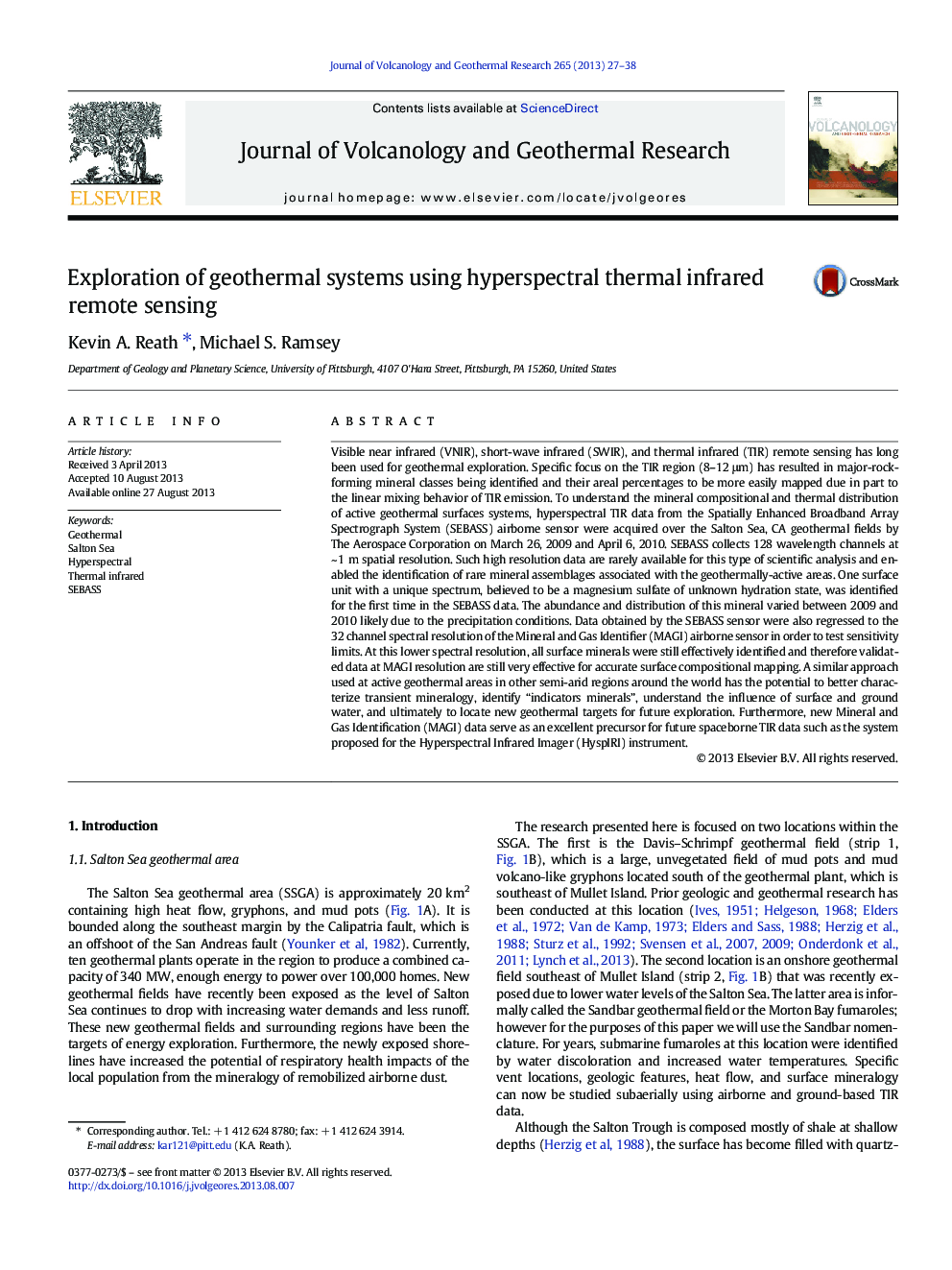| Article ID | Journal | Published Year | Pages | File Type |
|---|---|---|---|---|
| 4713315 | Journal of Volcanology and Geothermal Research | 2013 | 12 Pages |
•Geothermal indicator minerals are identified using thermal infrared (TIR) exploration.•Hyperspectral SEBASS data allows tracking of mineral changes over time•Comparison of the SEBASS, MAGI, and ASTER spectral data are performed•A minimum of 32 channels are needed to positively identify indicator minerals
Visible near infrared (VNIR), short-wave infrared (SWIR), and thermal infrared (TIR) remote sensing has long been used for geothermal exploration. Specific focus on the TIR region (8–12 μm) has resulted in major-rock-forming mineral classes being identified and their areal percentages to be more easily mapped due in part to the linear mixing behavior of TIR emission. To understand the mineral compositional and thermal distribution of active geothermal surfaces systems, hyperspectral TIR data from the Spatially Enhanced Broadband Array Spectrograph System (SEBASS) airborne sensor were acquired over the Salton Sea, CA geothermal fields by The Aerospace Corporation on March 26, 2009 and April 6, 2010. SEBASS collects 128 wavelength channels at ~ 1 m spatial resolution. Such high resolution data are rarely available for this type of scientific analysis and enabled the identification of rare mineral assemblages associated with the geothermally-active areas. One surface unit with a unique spectrum, believed to be a magnesium sulfate of unknown hydration state, was identified for the first time in the SEBASS data. The abundance and distribution of this mineral varied between 2009 and 2010 likely due to the precipitation conditions. Data obtained by the SEBASS sensor were also regressed to the 32 channel spectral resolution of the Mineral and Gas Identifier (MAGI) airborne sensor in order to test sensitivity limits. At this lower spectral resolution, all surface minerals were still effectively identified and therefore validated data at MAGI resolution are still very effective for accurate surface compositional mapping. A similar approach used at active geothermal areas in other semi-arid regions around the world has the potential to better characterize transient mineralogy, identify “indicators minerals”, understand the influence of surface and ground water, and ultimately to locate new geothermal targets for future exploration. Furthermore, new Mineral and Gas Identification (MAGI) data serve as an excellent precursor for future spaceborne TIR data such as the system proposed for the Hyperspectral Infrared Imager (HyspIRI) instrument.
